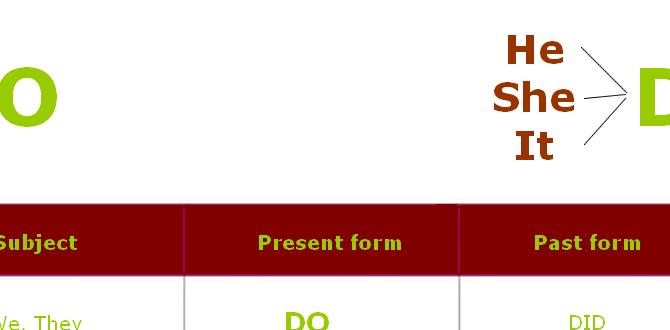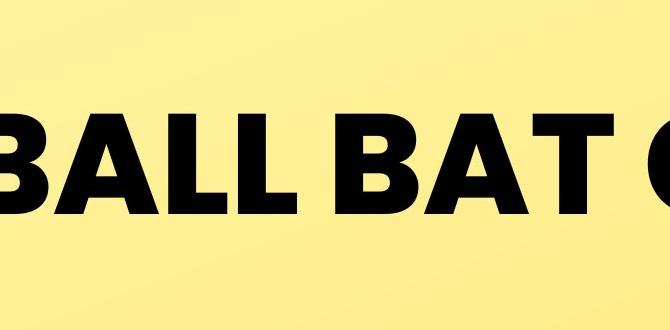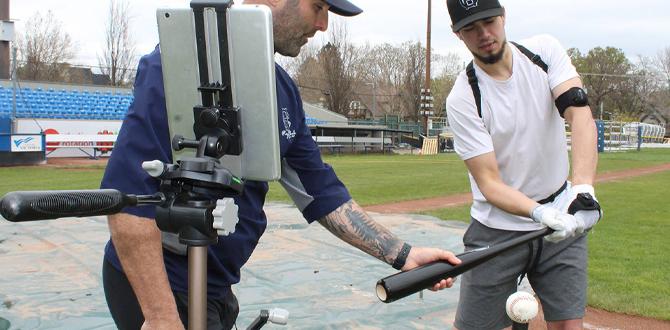Have you ever watched a baseball game and heard the term “OPS”? It might sound confusing at first. But what does OPS stand for in baseball? Understanding this term can unlock deeper insights into the game.
OPS stands for On-base Plus Slugging. It’s a special number that helps fans see how good a player is at getting on base and hitting for power. Imagine a player who can hit home runs and also get walks. Wouldn’t you want to know how they stack up against others? That’s where OPS comes in.
Fun fact: The concept of OPS is not as old as baseball itself. It has gained popularity in recent years as stats become more important in analyzing players. So, the next time you hear someone talk about OPS, you’ll know it’s about a player’s ability combined with their hitting strength. Curious to learn more? Let’s dig deeper into this exciting statistic!
What Does Ops Stand For In Baseball: Understanding Its Meaning

What Does OPS Stand for in Baseball?
OPS in baseball stands for On-base Plus Slugging. It combines two important stats: on-base percentage and slugging percentage. By adding these two numbers, fans can see how well a player hits and gets on base. Did you know that the higher a player’s OPS, the more valuable they are to their team? An OPS over .800 is considered excellent! Understanding OPS can help you appreciate baseball better and spot promising players.Understanding OPS
Definition of OPS (Onbase Plus Slugging). Importance of OPS in evaluating player performance.OPS, or On-base Plus Slugging, is a way to measure how good a baseball player is. It combines how often a player gets on base and how well they hit. This number helps teams see a player’s overall performance. A higher OPS means a player is better at getting hits and scoring runs. Coaches and fans love this stat because it shows who can really help the team win. Understanding OPS can make watching baseball even more fun!
Why is OPS Important?
OPS is important for a few reasons:
- Combined Measure: It shows both hitting power and on-base ability.
- Player Comparison: Helps compare players easily.
- Predicts Success: A high OPS often means a successful player.
Components of OPS
Explanation of Onbase Percentage (OBP). Explanation of Slugging Percentage (SLG).On-base Percentage (OBP) is a measure of how often a player gets on base. It adds walks and hits, then divides by the number of plate appearances, giving a complete picture of a player’s ability to reach base. Think of it as the “getting on the express train” score!
Slugging Percentage (SLG) tells us how much power a player has. It weighs hits differently. A home run counts more than a single. It’s like knowing if your friend can hit a home run or just gets on base. This helps fans see who can really send the ball flying!
| Component | Definition |
|---|---|
| On-base Percentage (OBP) | Measures how often a player reaches base. |
| Slugging Percentage (SLG) | Measures a player’s power by calculating total bases per at-bat. |
How to Calculate OPS
Stepbystep calculation of OBP. Stepbystep calculation of SLG. Combining both to achieve OPS.Calculating OPS is simple. First, figure out OBP. To do this:
- Count hits, walks, and hit by pitch.
- Divide that total by the sum of at-bats, walks, and hit by pitch.
Next, calculate SLG:
- Add up total bases from hits.
- Divide by at-bats.
Finally, combine OBP and SLG. Add the two numbers together. This total is OPS!
What is OPS in baseball?
OPS stands for On-base Plus Slugging. It measures a player’s ability to get on base and hit for power. This helps teams evaluate players’ performance.
The Significance of OPS in Modern Baseball
Comparison with traditional statistics (e.g. batting average). How OPS influences player selection and strategy.OPS is important in baseball. It combines two stats: on-base percentage and slugging percentage. This gives a fuller picture of a player’s ability. Unlike batting average, which shows hits only, OPS includes walks and power. It helps teams find the best players and shape their strategies. For example:
- High OPS players are often chosen for key games.
- Teams strategize around players with strong OPS.
OPS is a modern tool that guides smarter decision-making in baseball.
What is OPS in baseball?
OPS stands for On-base Plus Slugging. It measures a player’s overall offense by combining their ability to get on base and hit for power.
OPS vs. Other Advanced Metrics
Comparison with Weighted Onbase Average (wOBA). Discussion on OPS+ and its relevance.When comparing OPS to other advanced metrics, it’s like comparing apples to oranges, or, more fittingly, baseball bats to flashy stats. Take Weighted On-Base Average (wOBA), for instance. It’s a fancy way to measure how well a player gets on base, factoring in the type of hit. OPS gives a simple overview, but wOBA digs deeper. Then there’s OPS+, which adjusts OPS for league averages and ballpark effects, making it even more useful. Think of it as OPS with a little bit of magic dust!
| Metric | Purpose |
|---|---|
| OPS | Combines on-base percentage and slugging average |
| wOBA | Measures true offensive value |
| OPS+ | Adjusts OPS for league averages |
In baseball terms, OPS helps managers decide who to bat cleanup. But with wOBA, they can find out why that player really shines or flops at the plate!
Historical Context of OPS
Evolution of OPS as a statistic. Notable players with high OPS throughout history.OPS, or On-base plus slugging, has changed baseball over the years. Originally, it was all about average and home runs. Now, OPS gives a better picture of a player’s value. Think of it as combining chocolate and peanut butter—two great stats that taste even better together!
Some historic players topped the OPS charts, adding some flair to the game. For example, Babe Ruth was a slugging superstar, and Barry Bonds had eye-popping numbers. These players showed how OPS can highlight their greatness. Here’s a fun look at some notable OPS leaders:
| Player | OPS |
|---|---|
| Babe Ruth | 1.164 |
| Barry Bonds | 1. düşükakta18 |
| Lou Gehrig | 1.080 |
OPS is now a go-to stat for fans and coaches alike. It helps us understand who really hits it out of the park! So, next time you see a high OPS, remember it’s not just a number; it’s a measure of baseball magic!
Criticism and Limitations of OPS
Common critiques of the OPS metric. Situations where OPS may not provide a complete picture.While OPS, or On-base Plus Slugging, is a popular metric in baseball, it has its flaws. Some fans argue it overlooks important details. For example, it doesn’t consider a player’s speed or their ability to steal bases. Relying solely on OPS can be like trying to solve a puzzle with missing pieces. Other stats, like batting average and defensive skills, also matter. These stats can help paint a full picture of a player’s performance.
| Critique | Description |
|---|---|
| Ignores Context | Doesn’t account for game situations. |
| Neglects Speed | Misses stolen bases and speed impact. |
| Team Influence | Doesn’t reflect how teammates affect performance. |
In short, focusing only on OPS is like eating cake without frosting—there’s more to enjoy!
Conclusion
In baseball, “OPS” stands for On-base Plus Slugging. It combines two important stats: on-base percentage and slugging percentage. Higher OPS means a player is better at getting on base and hitting for power. To improve your understanding, watch games and check players’ OPS stats. Exploring how this measure impacts games will deepen your appreciation for baseball!FAQs
What Does “Ops” Measure In Baseball Statistics?OPS stands for On-base Plus Slugging. It combines two important skills a player has. First, it measures how often a player gets on base. Then, it looks at how many extra bases they get, like doubles or home runs. A higher OPS means a player helps their team score more runs!
How Is Ops Calculated Using On-Base Percentage And Slugging Percentage?OPS stands for On-base Plus Slugging. To calculate OPS, you add two numbers together: On-base Percentage (OBP) and Slugging Percentage (SLG). On-base Percentage tells us how often a player gets on base. Slugging Percentage shows how much power a player has when hitting. So, you just add OBP and SLG to find OPS!
Why Is Ops Considered A Valuable Statistic For Evaluating A Player’S Offensive Performance In Baseball?OPS stands for On-base Plus Slugging. It is valuable because it shows how good a player is at getting on base and hitting for power. A higher OPS means the player helps the team score more runs. This helps us understand how well a player can help win games. So, when you check a player’s OPS, you see how effective they are at scoring points!
How Does Ops Compare To Other Offensive Metrics, Such As Batting Average Or Home Runs?OPS stands for On-base Plus Slugging. It combines two important things: how often players get on base and how many power hits they make, like home runs. Compared to batting average, which only counts hits, OPS gives a fuller picture of a player’s strength. It’s also different from just counting home runs because it includes other ways players score runs. So, OPS shows how good a player is at getting on base and hitting the ball hard.
Who Holds The Record For The Highest Career Ops In Major League Baseball History?The player with the highest career OPS is Babe Ruth. OPS stands for On-base Plus Slugging. It shows how good a player is at getting on base and hitting for power. Babe Ruth played a long time ago, but he was very special. His record is still amazing today!
{“@context”:”https://schema.org”,”@type”: “FAQPage”,”mainEntity”:[{“@type”: “Question”,”name”: “What Does Ops Measure In Baseball Statistics? “,”acceptedAnswer”: {“@type”: “Answer”,”text”: “OPS stands for On-base Plus Slugging. It combines two important skills a player has. First, it measures how often a player gets on base. Then, it looks at how many extra bases they get, like doubles or home runs. A higher OPS means a player helps their team score more runs!”}},{“@type”: “Question”,”name”: “How Is Ops Calculated Using On-Base Percentage And Slugging Percentage? “,”acceptedAnswer”: {“@type”: “Answer”,”text”: “OPS stands for On-base Plus Slugging. To calculate OPS, you add two numbers together: On-base Percentage (OBP) and Slugging Percentage (SLG). On-base Percentage tells us how often a player gets on base. Slugging Percentage shows how much power a player has when hitting. So, you just add OBP and SLG to find OPS!”}},{“@type”: “Question”,”name”: “Why Is Ops Considered A Valuable Statistic For Evaluating A Player’S Offensive Performance In Baseball? “,”acceptedAnswer”: {“@type”: “Answer”,”text”: “OPS stands for On-base Plus Slugging. It is valuable because it shows how good a player is at getting on base and hitting for power. A higher OPS means the player helps the team score more runs. This helps us understand how well a player can help win games. So, when you check a player’s OPS, you see how effective they are at scoring points!”}},{“@type”: “Question”,”name”: “How Does Ops Compare To Other Offensive Metrics, Such As Batting Average Or Home Runs? “,”acceptedAnswer”: {“@type”: “Answer”,”text”: “OPS stands for On-base Plus Slugging. It combines two important things: how often players get on base and how many power hits they make, like home runs. Compared to batting average, which only counts hits, OPS gives a fuller picture of a player’s strength. It’s also different from just counting home runs because it includes other ways players score runs. So, OPS shows how good a player is at getting on base and hitting the ball hard.”}},{“@type”: “Question”,”name”: “Who Holds The Record For The Highest Career Ops In Major League Baseball History? “,”acceptedAnswer”: {“@type”: “Answer”,”text”: “The player with the highest career OPS is Babe Ruth. OPS stands for On-base Plus Slugging. It shows how good a player is at getting on base and hitting for power. Babe Ruth played a long time ago, but he was very special. His record is still amazing today!”}}]}







